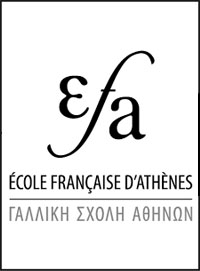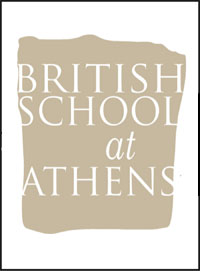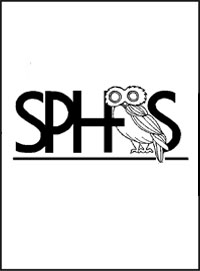Kastelli Hill - Chania - 2022
Informations Générales
Numéro de la notice
18542
Année de l'opération
2022
Chronologie
Mots-clés
Espace commercial - Espace public - Sanctuaire - Palais - Figurine - Monnaie - Revêtements (mur et sol) - Métal - Pierre
Nature de l'opération
Institution(s)
Localisation
Notices et opérations liées
Description
Kastelli Hill (Katre Street), Chania. Dr Maria Andreadaki-Vlazaki, under the auspices of the Ephorate of Antiquities of Chania reports on the excavation in the Kastelli Hill in the old town of Chania, and specifically in the area of the Katre Street, during the months October and November 2022. New findings further support the hypothesis that this was a palace of Chania and Kydonia of the Minoan Period.
Two more bases of wooden columns were unearthed (Figure 1), parts of the double colonade that covered the a large area (so far extending to 18m N-S and 10.30m E-W), dating in the 14th and 13th centuries BC. Attached to the north wall, at a place between the two colonnades, there is evidence of a wooden furniture, possibly a seat, that stood on a stone base on the floor (Figure 2).
The excavation also revealed more evidence of the great earthquake of the 13th century BC in the floor made of gravel and lime. In addition, regarding the Neopalatial Period (16-15th century BC) it showed that the area in front of the paved road that was revealed in 2018 was also made of gravel and lime; however, thinner layer and of different texture and technique than the large colonnade area of the 14th century BC, suggesting that this was an open area (Figure 3).
A number of pottery sherds of great vessels, with traces of fire that indicate collective craftmanship, are dated to the end of the 8th and the beginning of the 7th century BC. An important and rare for the region terracotta female head of a goddess was also unearthed and dates to the same period(Figure 4).
Other important findings include a number of clay whorls and loom weights (second half of the 7th / early 6th century BC), and 33 silver coins, mostly staters of the 4th century BC (Figure 5). The coins come from various cities of Crete, including Kydonia (Figure 6) and Knossos (Figure 7).
More pottery was found from a brief survey in an area belonging to Lionaki-Vlamaki, on the Kanevaro and Scordilon streets. These sherds helped further reconstruct artefacts of fine pottery datting before the middle of the 14th century BC, that was brought to light during the 2021 excavation. Another important find is a clay discus which includes a Linear A ideogram and which depicts a warrior and oxen skulls (Figures 8 & 9).
Two more bases of wooden columns were unearthed (Figure 1), parts of the double colonade that covered the a large area (so far extending to 18m N-S and 10.30m E-W), dating in the 14th and 13th centuries BC. Attached to the north wall, at a place between the two colonnades, there is evidence of a wooden furniture, possibly a seat, that stood on a stone base on the floor (Figure 2).
The excavation also revealed more evidence of the great earthquake of the 13th century BC in the floor made of gravel and lime. In addition, regarding the Neopalatial Period (16-15th century BC) it showed that the area in front of the paved road that was revealed in 2018 was also made of gravel and lime; however, thinner layer and of different texture and technique than the large colonnade area of the 14th century BC, suggesting that this was an open area (Figure 3).
A number of pottery sherds of great vessels, with traces of fire that indicate collective craftmanship, are dated to the end of the 8th and the beginning of the 7th century BC. An important and rare for the region terracotta female head of a goddess was also unearthed and dates to the same period(Figure 4).
Other important findings include a number of clay whorls and loom weights (second half of the 7th / early 6th century BC), and 33 silver coins, mostly staters of the 4th century BC (Figure 5). The coins come from various cities of Crete, including Kydonia (Figure 6) and Knossos (Figure 7).
More pottery was found from a brief survey in an area belonging to Lionaki-Vlamaki, on the Kanevaro and Scordilon streets. These sherds helped further reconstruct artefacts of fine pottery datting before the middle of the 14th century BC, that was brought to light during the 2021 excavation. Another important find is a clay discus which includes a Linear A ideogram and which depicts a warrior and oxen skulls (Figures 8 & 9).
Auteur de la notice
Georgios Mouratidis
Références bibliographiques
https://www.haniotika-nea.gr/apokalyptetai-stadiaka-to-anaktoriko-kentro-ston-lofo-kastelli-fot/
Légende graphique :
![]() localisation de la fouille/de l'opération
localisation de la fouille/de l'opération
![]() localisation du toponyme
localisation du toponyme
![]() polygone du toponyme Chronique
polygone du toponyme Chronique
Fonctionnalités de la carte :
![]() sélectionner un autre fond de plan
sélectionner un autre fond de plan
![]() se rapprocher ou s'éloigner de la zone
se rapprocher ou s'éloigner de la zone
![]() afficher la carte en plein écran
afficher la carte en plein écran
Date de création
2023-06-26 15:33:36
Dernière modification
2024-02-08 12:41:17
Figure(s)










